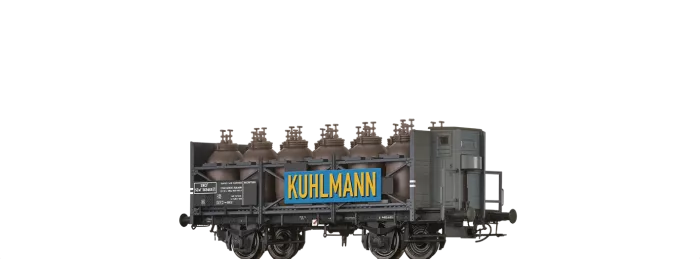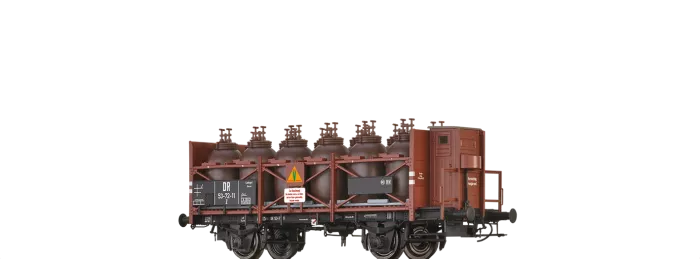![49326 - Säuretopfwagen Z [P] "BASF" DRG](/fileadmin/user_upload/produkte/webp/49326.webp)
Acid Carrying Car Z [P] "BASF" DRG
Road no.: Mainz 514 666 [P]
Model details
- Individually mounted signs
- Bogie with three-point support
- Precise replica of board joints
- Wheelsets with inside contours
- Multi-part brake system
- Brake blocks in wheel plane
- Individually mounted axle brake rod
- Metal axle holders
Downloads
Info about the original
For a long time, tank wagons were unsuitable for the transport of aggressive liquids such as acids. Although boilers equipped with a rubber cladding were available as early as the 1920s, acid wagons were still generally used in order to transport such goods. In doing so, the wagon construction companies used the undercarriage of the standard layout wagon with a wheel base of 4.00 m or 4.50 m and arranged ten or twelve earthenware containers, each with a filling capacity of between 1000 and 1200 L. The containers were held in place using wood and rubber attachments and the box supports were reinforced using diagonal braces. The inclined floor which improved the ability of spilled cargo to flow away was partially cast using a bitumen compound or was protected with a lead sheet. A wooden walkway can be found between the containers. The containers are sealed using rubber or wooden stoppers. A tall bulkhead protects the personnel on the braking platform which is mandatory on the acid wagons. Many small and large chemical companies used such wagons as private wagons at their respective railway directorate. In the FRG, Degussa donated its last acid wagon to the Bochum-Dahlhausen Railway Museum in 1985. Acid wagons were still used at the DR until 1990 and several clubs still own retained wagons such as those in Aschersleben, Magdeburg and Stassfurt.


![49330 - Säuretopfwagen Z [P] "Bosch" DB](/fileadmin/user_upload/produkte/webp/mobil_700/49330.webp)

![49328 - Säuretopfwagen Z [P] ÖBB](/fileadmin/user_upload/produkte/webp/mobil_700/49328.webp)
